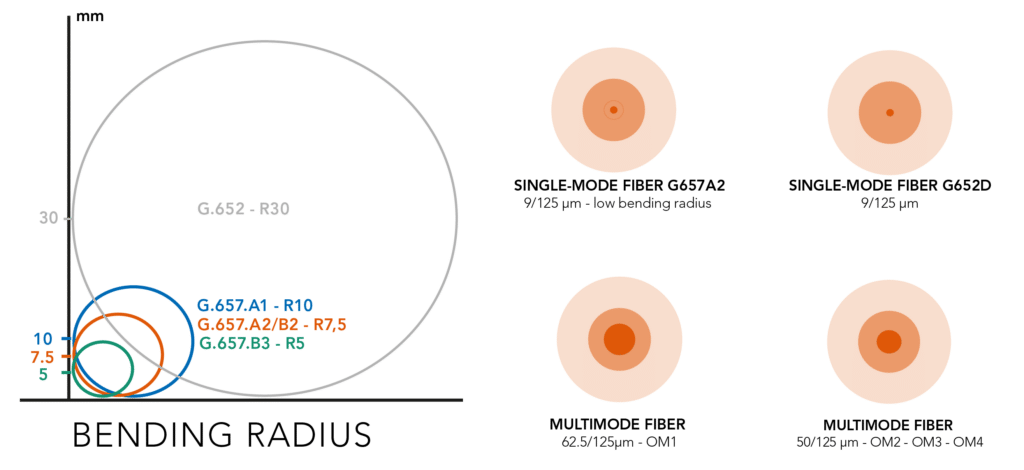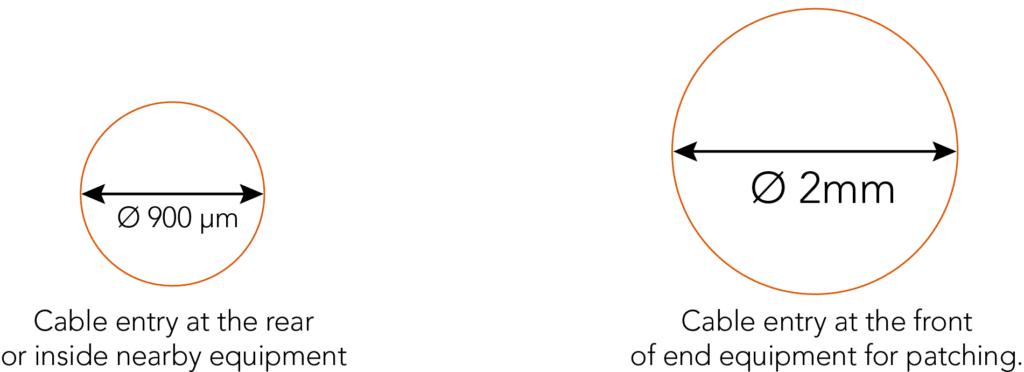How to choose your preconnectorized cable?
A preconnectorized optical fiber cable is a cable equipped with connectors at its ends upon delivery, thus simplifying its installation and reducing deployment time. Choosing the right preconnectorized cable is essential to ensure a high-performing network. So, how do you choose your preconnectorized cable?
Follow this six-step guide to select the one that best suits your needs.
Step 1: Preconnectorized cable structure
The cable structure determines its design and ease of installation. You can choose from various options, such as:
- Breakout (2mm outer diameter sheath): Ideal for direct connections, with individual strands of 2mm.
- Distribution (900µm outer diameter sheath): Strands are grouped within a 900µm sheath, facilitating splicing or connection to connectors.
- Minicore / Mini breakout (250µm fiber diameter): They are the ideal solution for extremely dense indoor environments inherent to the FTTH market, particularly at the Central Office level.
*with FOLAN splitter solutions.

Step 2: Number of optical fibers
The number of optical fibers depends on the specific needs of your network. You can choose cables with a number of fibers ranging from 1 to 144, depending on the capacity required for your application.

Step 3: Type of optical fibers
The choice of optical fiber type depends on the transmission distance and desired performance. Options include:
- Single-mode fiber G652D: For long distances.
- Single-mode fiber G657A2: Ideal for installations with low bending radius.
- Multimode fiber: Suitable for short distances and high-speed applications.

Step 4: Diameter of optical fibers
The diameter of optical fibers varies according to the application:
- 900 µm: For cable entry at the rear or inside of nearby equipment.
- 2 mm: For cable entry at the front of end equipment to perform patching.

Step 5: Type of connectors for the preconnectorized cable
Fiber optic cables can be equipped with different types of connectors, each with its advantages:
- SC: Simple square connector, easy to use.
- ST: Robust connector with a bayonet for easy insertion.
- LC: Small latch connector, ideal for high-density applications.
- E2000: Locking connector with a protective cap, offering high stability and additional protection.
- FC: Connector with an external threading for secure fastening.
- MTP® or MPO: Multifiber connector for quick connections in data centers and large-scale networks.

Step 6: Type of protection for the preconnectorized cable
Cable protection is essential to ensure its durability and resistance to damage. You can choose from different levels of protection according to your needs:
- Simple protection: Provides basic protection for the cable.
- Standard protection: Enhances resistance to twists and bends.
- Advanced protection: Utilizes more robust materials like metal armor for maximum protection against physical damage.

By following these six steps, you can choose the preconnectorized fiber optic cable perfectly suited to your needs.
Discover also our guide to choosing your fiber optic cable.
👇 Order your fiber optic cable on our website 👇
Need more details on fiber optic cables?
Contact us for more information; our fiber optic experts will respond to your needs promptly:
contact@folan.net
+33 (0)4 78 800 810



